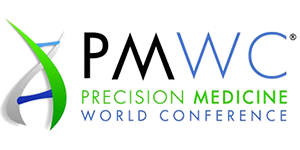
10 Sep An interview with Aleksandar Rajkovic, Chief Genomics Officer, UCSF

Dr. Rajkovic recently moved to UCSF to be the Chief Genomics Officer (CGO) and in his function he also serves as the Medical Director and Chief of the Center for Genetic and Genomic Medicine (CGGM) that organizes, coordinates, and oversees Clinical Genetics and Genomics Services across the entire UCSF Health System. His research interests lie in basic and translational medical sciences in the area of reproductive genetics, with a particular focus on whole genome applications towards population-based health prediction and prevention, as well as elimination of Mendelian disorders. Read his full bio.
Interview with Aleksandar Rajkovic, UCSF
Q: Genomics, Digital Health, Big Data, and Artificial Intelligence are some of the newest technologies/fields that are reshaping medicine and healthcare. • How will these technologies impact healthcare, and in particular the area of individualized medicine? • What is it that we can realistically expect from these technologies to improve healthcare and in what timeframe? • What is still required in order for us to be able to take advantage of the full potential of these technologies?
A: The era of genomics and big data is here now – it is happening and used in various ways. Big data is very important for healthcare systems and promises to deliver efficient and cheaper care. For example, big data is applied to understand whether pharmacogenetics can help in terms of cost of drugs, whether it decreases re-hospitalizations, and whether complications are associated with a drug. A number of health systems are looking into the benefits of pharmacogenetics within their workflow and for their patients.
The UC system has an agreement in place to share data among different campuses and put it into a common repository that everyone can access for various analytical purposes. Health systems today are now armed with big data which allows them to answer various types of questions and for example therefore either approve or not approve a very expensive drug in a particular situation. Let’s say, there is a new drug and the cost is 10x of what the old drug is, but it promises to cut the hospitalization time in half, then one could ask the question whether that drug is cost-effective or not? Overall, there is lots of big data analysis going on to help track efficiency in the health care environment. The bottom line: all health care systems are trying to deliver as cost-effective health care as possible, because the consumers are sensitive to costs and high prices. And then of course, insurance companies are also very much scrutinizing all the expenditures, and especially if there is going to be a movement towards some sort of health care for all, the utilization of services will come under even bigger scrutiny. Therefore, having rational, data-based ways to deliver healthcare is important.
“..genomics is clearly already practiced across many health systems, with artificial intelligence and machine learning definitely making an impact.”
When it comes to genomics, this new era is already here, especially in a prenatal and pediatric setting. Genomics will become standard at preconception where we have now expanded carrier screening, with assays screening 100+ genes and in the near future whole genome sequencing may enter carrier screening. Clearly, detecting genomic diseases much earlier at the preconception or prenatal stage is already happening and will only increase. Approximately 30 – 40 percent of couples do expanded carrier screening. Hopefully in the future, more like 90 percent will participate in expanded carrier screening and I hope this will actually include whole genome sequencing. We really should be able to detect the vast majority of heritable recessive disorders, and either do preconception genetic testing, or perform some sort of prenatal diagnostics to reduce the burden of genetic sickness which currently in pediatric hospitals accounts for between 30 – 50 percent of all the costs. There is a lot of genomics being done in the embryo space to basically try to avoid implanting embryos that will carry debilitating and horrible diseases that will lead to an early death or significant disability. We may even see a greater shift towards in vitro fertilization services to prevent heritable disorders. In addition to reproductive and pediatric genetics, cancer genomics has now become a standard of care, both for therapeutics as well as diagnostics. Of course, there are still issues that need to be addressed, such as scale or how specific genes impact care, and there are a number of drugs that are being tailored now based on genomics.
So, I believe, genomics is clearly already practiced across many health systems, with artificial intelligence and machine learning definitely making an impact, especially in the area of germline genetics by helping with prioritizing variants in the context of patient phenotypes. In the area of cancer genomics, it is helping with tumor classifications and helping with better cancer outcomes and prognostication. There is significant push in incorporating other clinical metadata to further improve diagnostics and prognostication. In other areas, AI and machine learning are making significant inroads into digital pathology. Basically, in a lot of areas where you have quantifiable systems, mathematics and algorithms can definitely contribute towards eliminating a lot of human error in diagnostics applications. AI and machine learning can also become impactful in predicting somebody’s health outcomes by measuring a variety of molecular signatures in blood and other tissues and incorporating that data with other clinical and survey/questionnaire information. I believe artificial intelligence will probably play a substantial role in this specific area.
Q: What are some of the biggest challenges we need to overcome to make the use of clinical genomics a successful implementation for everyone? How will we get there and is it feasible from a cost-perspective? What promises for improved outcomes for a patient can we expect in a more efficient health system?
A:
“…clinical genomics has been plagued by the lack of what one would call very solid clinical utility data.”
I believe that clinical genomics has been plagued by the lack of what one would call very solid clinical utility data. By that I mean that we don’t have trials with thousands of people with one disease where we can show that early (genetic) diagnosis can lead to diminished costs for the insurance provider and improve the life of patients. Now, there are clearly a lot of individual examples where that is the case. Genetic disorders are relatively rare by themselves, but in aggregate they are not rare and account for 30 – 40 percent of pediatric hospital expenses. Many genetic disorders are metabolic diseases that occur in childhood and can now be treated with appropriate enzyme replacement therapies. There are more and more gene therapy trials. In addition, these diseases are amenable to genome editing which will come more and more into play to treat genetic disorders.
There are a lot of genetic diseases that could be treated through genome editing and gene therapy, especially the ones that have to do with bone marrow stem cells, e.g. sickle cell disease. But in all situations, it is critical and important to make the correct diagnosis through genomics in the first place. Since most of these diseases by themselves are rare, randomized control trials are difficult to conduct in order to demonstrate their utility. Having said this, many insurance companies are understanding this now. There has been an improvement in reimbursements on the gene panel testing side with many genetic companies providing valuable testing. Nonetheless, these companies are often struggling to make any profit from genetic testing services.
“…pretty much every specialty is now impacted by the knowledge of genetics and that includes heart disease, neurology, and cancer in the adult setting of health care.”
Clinical genomics, in many situation, is a money loser. Clinical genetic testing within a health system overall is not profitable. The primary reason being poor reimbursement and under sourced billing and authorization services at medical centers. As a result, some health systems have decided to outsource genetic testing by contracting with different companies to do their genetic testing. Clinical geneticists see complex patients that require significant amount of time and are poorly reimbursed. Genetic counselors themselves are not profitable, cannot bill Medicare and require significant time with their patients as well as potentially affected family members. Nonetheless, the delivery of these services – even though they are not making money – are critical across the whole spectrum of specialties. Mostly, because pretty much every specialty is now impacted by genetic testing.
Genetic testing for cancer is also a bit under scrutiny as we ask the question whether we should have every patient tested for cancer predisposition, and whether a primary care physician could take care of this. These are issues that are being debated and are being under the microscopes in every health system to understand the best utilization of the very limited genetic professional headcount, because genetic counselors and medical geneticists are very small in numbers compared to other specialties.
So how do we make genomics for everyone? This would require a very transparent and very communicative electronic medical record where all of the genetic testing data can be linked, with what we think at this time are best practices. This would allow any primary care physician to basically see what to do with a particular genetic makeup. It would require a simple and straightforward implementation into their practice without them really having to think what all that information means. It would already be translated for them via computational means or by an algorithm that has been trained, and all information would be put it into a setting that is interpretable by everyone. Many healthcare systems are already piloting various approaches by using a non-genetic workforce to implement genetics, and to make it accessible to all specialties to make interpretation accessible across all specialties.
In terms of cost, it all depends on the healthcare system. For a closed system, with its own healthcare insurance arm like Kaiser, Geisinger Health, or Intermountain Healthcare, it makes sense to do their own genetic testing and to cover the cost. By offering carrier screening they will have fewer genetic diseases which will translate into fewer instances where the insurance company ultimately will have to cover the costs for multimillion-dollar medications or gene therapies. Furthermore, these closed systems are investing into their own testing because they want to keep the data as a valuable commodity, while they save money by doing the testing in-house. Other systems are simply partnering with genetic testing companies that promise to do the testing for “free”, meaning that they assume the risk to get the money back from the insurance companies or copay from the patients. So, you have different adaptations to how to pay for testing based on whether you are a closed system or whether you are a hospital system without a healthcare insurance in the background (many smaller hospital systems), or you have significant philanthropy and/or hospital system investment in supporting in-house genetic testing service. Genetic testing should ideally be part of a complete genetic service offered within a health system, from clinical encounters by physicians and counselors to in-house testing capability, data retention, and data re-interrogation.
Q: The integration of clinical genomics with other clinical and/or patient related data has been notoriously slow over the past years, though we detect a positive trend towards a change. • By when can we expect full integration and adoption of genomics in the clinic? • What needs to change to see full adoption? • What strategies is UCSF Health taking to successfully implement clinical genomics in the clinical setting?
A: The answer to these questions depends on the genetic service that one actually is offering. There are a variety of different types of genetics: prenatal genetics, pediatric genetics, adult genetics, cardiovascular genetics, neuro genetics, and then there is also preventive genetics for individuals who just want to get their genomes sequenced, but they’re relatively healthy. The model that UCSF would actually like to pursue is a model where we pair genetic professionals with non-geneticists to work together to basically provide genetic counseling and testing to all the patients that need it at UCSF. This approach is useful because the number of professionals with genetics expertise (e.g. genetic physicians as well as genetic counselors), is small relative to what our needs are. This is due to the fact that there is an immense competition from the commercial sector to employ both medical geneticists and genetic counselors, in addition to the fact that few medical genetics physicians are being trained. As a result, we are definitely trying to involve allied health professionals such as nurse practitioners or physician assistants that are trained to deliver genetic health in the clinic which therefore could help us cope with the current workforce shortfall. We are partnering our genetic counselors, who still need physician oversight, with non-geneticists such as cardiologists or oncologists that are genetics savvy. This will expand the network of genetic providers. We are also expanding access to adult genetics, which is another service with significant demand.
Additionally, we are also trying to get all the genetic testing that is both done in-house and outsourced to be added to a centralized genetic information management system that will then communicate with electronic medical records. We are working on this development together with Epic. In this context, we are using the genomic indicator module to build best practice alerts around certain pharmacogenetics drugs as well as certain high-profile gene variants such as the ones within BRCA1 or BRCA2 so that genetics truly becomes accessible to all practitioners. The physicians will see these specific alerts in the electronic medical records system. The idea being, that when one prescribes a drug and there is pharmacogenetics information on this individual within the system, then an alert would indicate to the treating physician to consider a drug replacement or a lower dosage. Our hope is that we can provide through the germline analysis space all the needs in terms of counseling, alerting our primary care physicians, and also getting the message out to the patient’s family members that may be at risk.
Of course, there is the whole other issue of cancer genomics and tumor testing and we are pretty much trying to develop an expanded molecular tool kit for it. Currently we have also a number of UCSF affiliates who we are trying to educate and thus expand our ability to teach other oncologists what do to do with this information and how useful this information is, especially for difficult cases. We are also trying to build out very simple interpretive results, so that our generated cancer genomics reports are easy to interpret by the physician, and have clear indications about which drug should be used or not, or which clinical trial(s) are available when particular genetic changes exist.
Bringing people together from different clinical silos, and trying to bring all of the genetic services to work together, to share their knowledge, to share their patient information, to share their expertise, and to have them work on common goals is challenging. Yet, it is really the only way to move forward. We have created the UCSF Center for Clinical Genetics and Genomics that integrates all the available genetic services across UCSF and provides a platform for our non-genetic providers to seek best genetic expertise and testing.
One effort that will require full integration and adoption in the clinic is population-based sequencing. Yet, primary care physicians (PCPs) are not interested in having their appointments extended or having to deal with additional information overload. In those types of settings when we are sequencing populations that we perceive to be healthy but will return actionable results, we have to minimize involvement of the primary care physicians and provide backup genetic services. Within a health system, this will happen with the patient’s consent and the findings will be integrated into the electronic medical records system, in a usable form for the PCPs. This is important for PCPs, because they are not going to be interpreting the reports, and as such they are not going to be dealing with variants of unknown significance or other technicalities of genetic testing. So we need to make genetic testing and counseling as effortless as possible for our primary care physicians. While PCPs are very interested in using this information for their patients, they do not want the information overload and they do not want to add another five to ten minutes to spend explaining what this means or doesn’t mean. Every practice will be different, but in general, it is essential that PCP concerns are taken into account in the setting where population based sequencing is conducted.
Q: There are lots of challenges that need to be overcome when analyzing and streamlining genomics data in the clinic. How is UCSF planning to scale its infrastructure in support of integrating genomics data? What is the approach you are taking?
A: The data is of course very important, and what is becoming even more important in genomics – as we move towards doing whole genome sequencing – is providing access to the data for everyone within the system including individuals that intend to work with the data for research discoveries of genetic associations and disease understanding. As such, there is the need to be able to store this data in a way that makes the data easily accessible and usable. Here at UCSF, we have made a substantial investment into the Bakar computational health science institute that is collaborating with a number of UCs across California, and they are building a system called OMICS Commons, where all of the genetic data will ultimately reside. This system will support data re-interrogation and re-analysis, both on the clinical as well as on the research side of things. As I mentioned, this of course requires significant investment. I believe that at UCSF – which it applies UC wide – there is a strong sense that this is the right approach to take, and that we need to invest into a data warehouse as well as supporting data software.
Q: What are you expecting PMWC attendees will walk away with from the PMWC 2020 Silicon Valley conference? • What are some of the call to actions that we as a community should focus on? • What are some of the PMWC 2020 talks everyone should attend and why?
A:
“…whole genome sequencing should be a standard of care in many disciplines. As a call to action, we should make sure that these efforts are being reimbursed appropriately and paid by health plans, because they are becoming a very important and essential part of healthcare.”
The message for this precision medicine conference is that the sequencing is continuing at unprecedented pace, and that whole genome sequencing should be a part of standard of care in many disciplines. As a call to action, we should make sure that these efforts are being reimbursed and paid by health plans, because they are becoming a very important and essential part of healthcare impacting every branch of medicine. I believe for this to happen there actually needs to be some conversation at a state level. Why is genetic testing facing so many obstacles as compared to other types of testing, like MRIs or CAT scans? The state may decide that this is not the way to treat our patients, and that we should make sure that all of our disadvantaged populations, such as patients who cannot afford it, patients without insurance, or patients that face the real possibility of bankruptcy due to healthcare costs, will have unfettered access to genomic testing and genomic cures. The practicing physicians should not need to spend hours seeking authorization for a particular test and revolutionary genomic applications in the clinical space should not have to rely on philanthropy.






